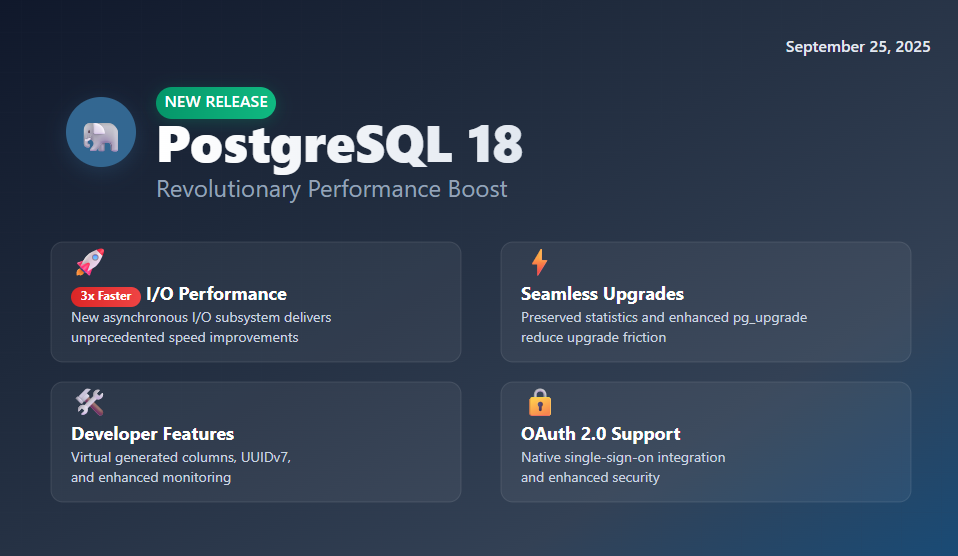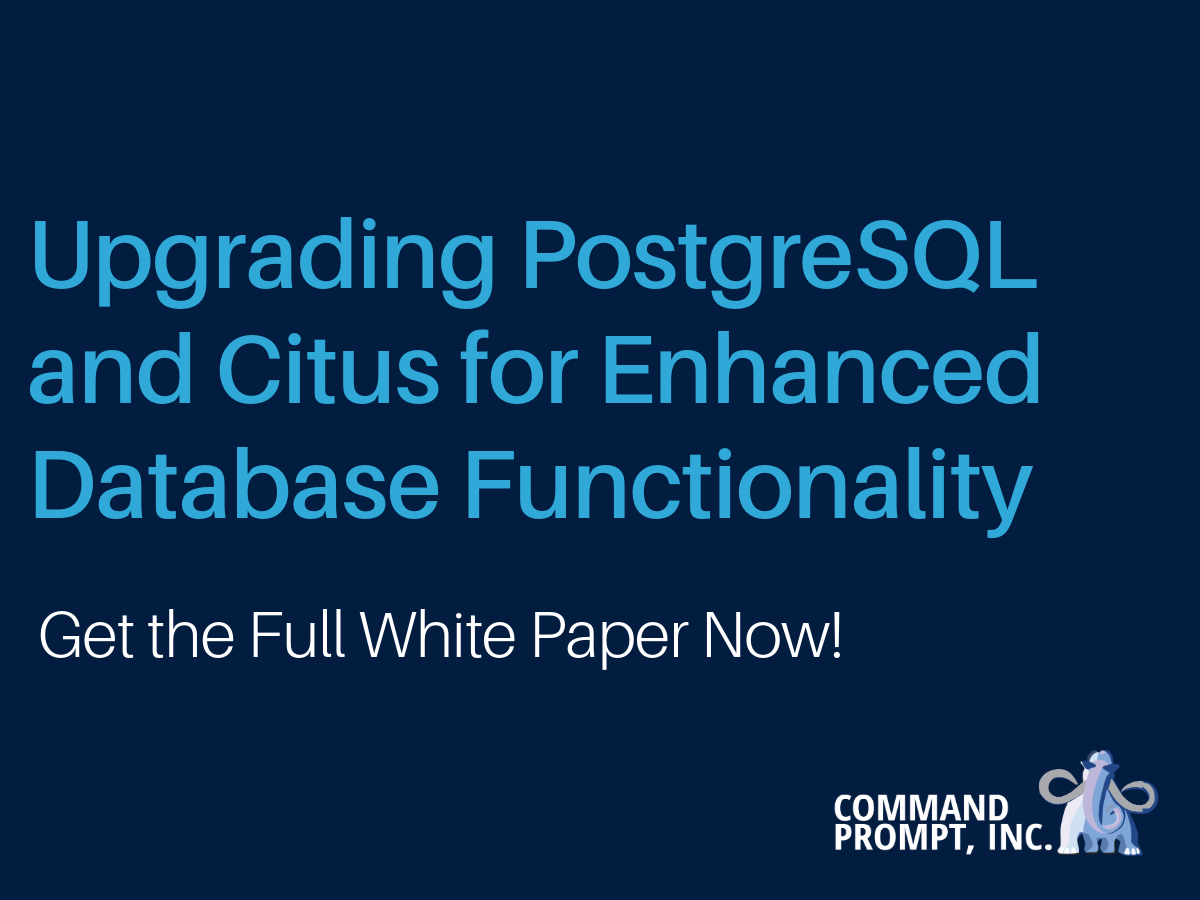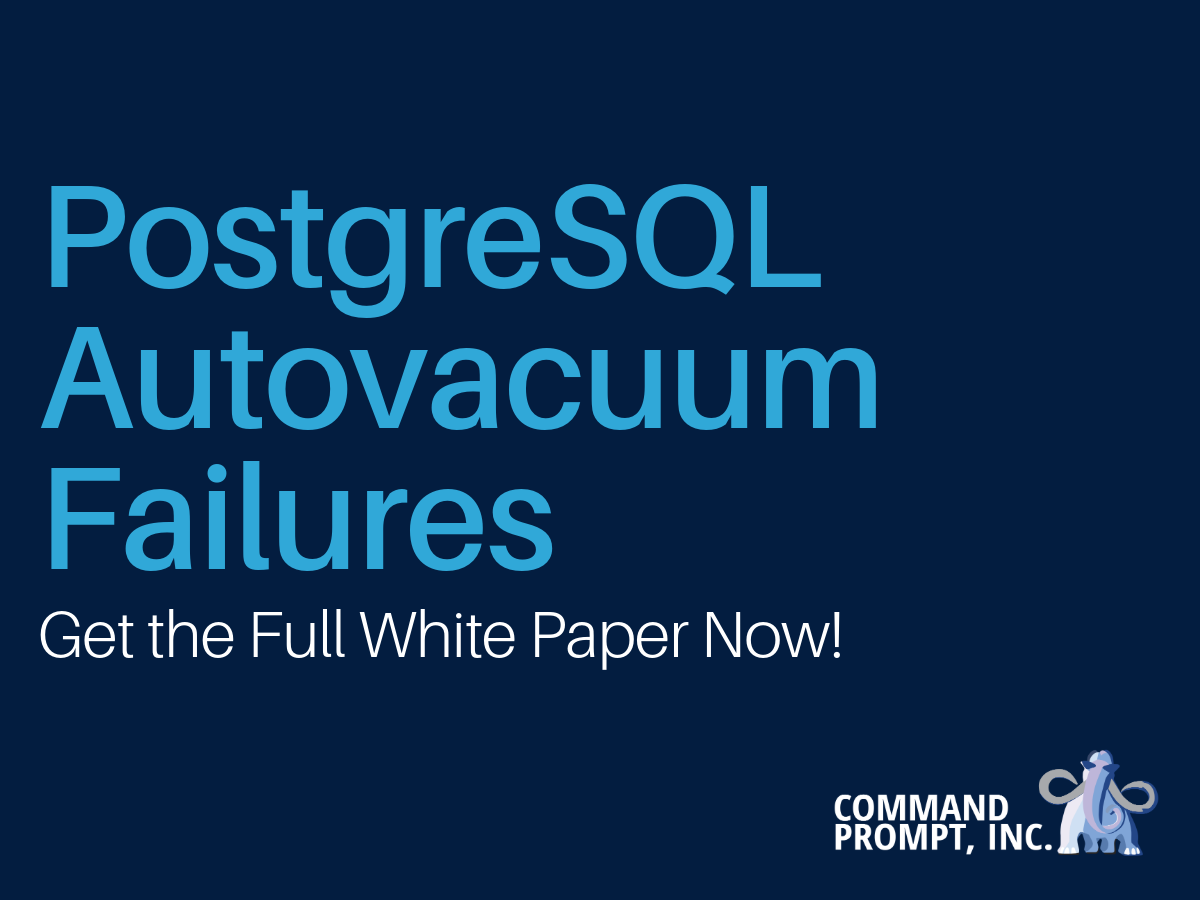PgManage now supports Microsoft SQL Server and includes numerous UI improvements and features intended to make your daily database work more efficient. See the blog post for a feature overview and insights into our decision‑making process.
Blog
PostgreSQL Version 13 Reaches End of Life: Migration and Extended Support Strategies

PostgreSQL 13 has officially reached end of life as of November 13, 2025, leaving organizations without security patches or community support. Learn your options for upgrading to a supported version—or extending security coverage with PgLTS.
PostgreSQL 18: Revolutionary Performance Boost Now Available

The PostgreSQL Global Development Group has released PostgreSQL 18, delivering the most significant performance improvements in recent years. This latest version transforms database I/O operations and streamlines the upgrade experience for organizations worldwide.
PgManage 1.3.1: Enterprise Edition Released
PgManage 1.3.1 is now available with fixes across PostgreSQL, Oracle, MariaDB, and SQLite3, plus updated dependencies and UI refinements. Learn what’s new and explore PgManage Enterprise Edition with remote access, multi-user support, and OAuth2 integration.
Upgrading PostgreSQL and Citus for Enhanced Database Functionality

Discover how a client successfully upgraded PostgreSQL 11 to 15.5 and Citus 8.3 to 12.1 while simplifying extensions, improving scalability, and enhancing performance. This real-world case study highlights the planning, testing, and expertise required to achieve seamless upgrades in distributed environments.
Part 6: Prevention and Monitoring Strategies

PostgreSQL’s autovacuum is a silent guardian until it fails. In this final post of our autovacuum series, we tackle two often-overlooked scenarios that can lead to database downtime: temp tables in multi-database clusters and lingering sessions with temp tables. Learn practical prevention tactics and monitoring strategies to keep your cluster safe from XID wraparound and emergency shutdowns.
Part 5: Temp Tables and XID Wraparound in Single-DB Clusters

Even in single-database setups, temp tables can quietly lead to major problems. In this post, we break down how long-lived temp tables contribute to XID wraparound risk, why PostgreSQL shuts down to protect against it, and what proactive steps you can take to avoid unexpected downtime.
Part 4: Debugging Limitations in RDS and Cloud Environments

Part 4 of our PostgreSQL Autovacuum Failure Series explores how session-level temp tables in RDS can silently stall autovacuum—and how we resolved it. Learn why monitoring and visibility are critical in managed cloud environments.
PgManage 1.3 Release: Powerful New Features and Enhanced Usability

PgManage 1.3 is here with major updates including a redesigned dashboard UI, JSON export, code folding, PostgreSQL 17 support, and more. This release focuses on usability, performance, and cross-database compatibility, enhancing your workflow whether you're using PostgreSQL, MariaDB, MySQL, or others.
Part 3: Why Autovacuum Stops — PostgreSQL Internal Mechanics Explained

Series Summary: This is Part 3 of a multi-part series on PostgreSQL autovacuum failures.
In Part 2, we reproduced the autovacuum failure issue — now let’s understand why it happens. This post dives into PostgreSQL internals, explaining how autovacuum allocates its resources and why certain databases get “stuck” in maintenance limbo.
Why Does This Occur?
This behavior stems from how the autovacuum daemon allocates its resources. Autovacuum identifies the …